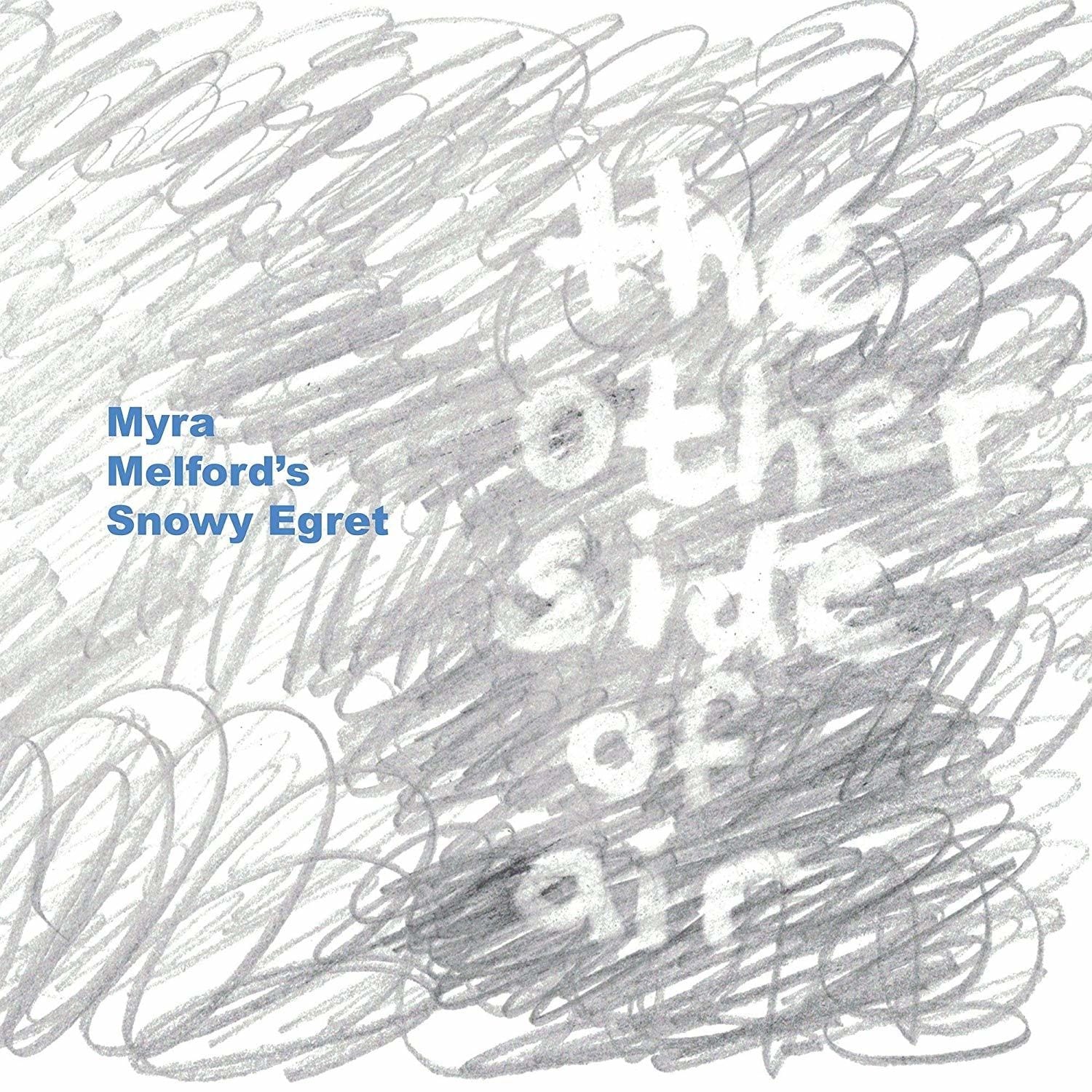
There is a restless quality to Myra Melford’s music. Her piano can be lyrical or mad, but it is always playful, always in movement. The same goes for her writing, which is a clattering and beautiful thing at once. Even her ballads tend to be filled with rhythmic play and plenty of motion. On the latest from her band, Snowy Egret, the song “Chorale” is a quiet, gorgeous conversation across this well-balanced quintet, not just chords, and a pretty melody but a set of intersecting lines that rub against each other. Melford’s music has that feeling of connection, of friction, of interest.
The Other Side of Air is a recording of continual motion and invention. The band, held over from the last recording, is essentially an all-star group in creative music: Ron Miles on cornet, Liberty Ellman’s guitar, percussionist Tyshawn Sorey, and Stomu Takeishi on bass. Capable of following Melford anywhere (and, one supposes, also leading her to new places within her own compositions), this group also has the quality of being carefully synchronized, aesthetically but also sonically: each instrument seems to blend into the whole, making this music sound less like a group of soloists than like a small orchestra.
“Attic”, for example, makes Snowy Egret sound like a band at least twice as big as it actually is. Of course, Sorey’s drum kit truly is about ten different instruments itself, and as he starts the tune rattling a groove on toms, snare, kick, and cymbals, the music already sounds positively philharmonic. But as the piano enters, then piano/guitar/bass, then Ron Miles’ cornet as well, the pieces move in a perfect synchronization that creates the impact of a larger group. Then the group embarks on a series of improvised settings that open up huge areas of sonic space. Bass and drums improvise together as piano and guitar provide a tapping, pointillistic single-note accompaniment, then a collective improvisation breaks out with every instrument crossing paths in the center of the sonic space. The intensity of this moment then gives way to a quiet cornet solo in ballad mode with the other instruments thrumming in a whisper behind the horn, which means, of course, that a change is coming again, with a groove set up in an odd time signature, surging up back into all five instruments returning to the original pattern of popping notes, this time in an improvised counterpoint that erupts into a guitar solo. All of this territory, all of these textures, covered by five players.
Other tracks are seamless and whole but more contemplative. “City of Illusion” begins as a peaceful piano solo that builds into a piano trio, then adds a flurry-like melody for piano and muted cornet, together. Dancing rhythms take over, with Ellman’s guitar working with Melford’s piano on a quiet, plucked-string figure as Miles solos. The tune crumbles into near silence only to rise again on a new set of gently dancing rhythms for a guitar solo that spirals into a lovely ending figure. The title track (a suite of two pieces) is a tone poem: first a pulseless sketch of a cornet solo surrounded by elegant filigree, then a bass solo leading to a melody that moves in undulating up-and-downs punctuated by hopping intervals that lead to the next gentle line. Sorey’s cymbals are like a bed of leaves beneath the airstream of the composition, which sounds like an autumn thing, the cool air of calm, a certain kind of light that soothes your soul as winter approaches.
Even when the band is more rhythmically aggressive, there is a delicacy. “Dried Print on Cardboard” has a pointillist quality, with guitar and cornet playing a staccato melody against a popping piano figure. Sorey and Takeishi are clipping and snapping too, the whole ensemble in a counterpoint that evokes Henry Threadgill’s music but maybe Stravinsky too, except that this music dances more. “Motion Stop Frame” burbles and bounces with similar energy, though it is more infused with blues tonality, connecting it back to the adventure we associate with Charles Mingus and Eric Dolphy—a modern kind of dance music that contains both melody, groove, and dissonance. Melford’s solo on this tune is the highlight: her piano is actually the most rambunctious instrument in the ensemble during most performances, and her playing is more likely to evoke the Mingus pianists (Don Pullen, Jake Byard) than the usual modern jazz suspects (Hancock, Tyner, Jarrett).
Her particular version of the new jazz is not as schematic as some, not as obsessed with compositional complexity or the intersection of abstraction and shifting time signatures. The lightness of the colors she has chosen for the band—Ellman’s often feathery tone, Takeishi’s acoustic bass guitar, and Miles’ usually gentle cornet—give her music some of the impressionistic sheen of the ECM catalog. And because the songs that choose to dance rather than just bend your brain are so infectious, The Other Side of Air is more likely to delight than some of the recent music from, say, Mary Halvorson, with its thorny textures.
All of this makes Myra Melford’s Snowy Egret a highly individual example of how “jazz” in this century is finding new ways to delight, even if that doesn’t mean being “popular music” in the contemporary sense. This is art music that stands at several intersections at once, drawing from several traditions but, ultimately, representing something singular: one musician’s musical imagination, where an ensemble comes together and becomes bigger than five voices. It is the motion and spontaneous rub between those voices that make is “jazz”, you might seem. And it’s nice to see that tradition grow in a direction this beautiful yet still challenging.

